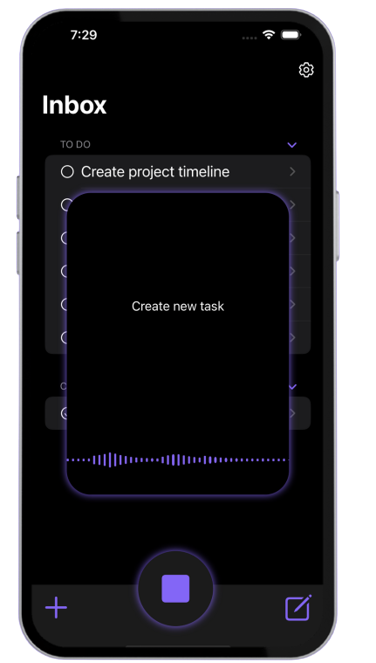If there were a dollar for every time someone glanced at their to-do list and thought, “If only I had more time,” we’d all be swimming in cash. Time, after all, is the invisible currency of productivity. It dictates not just how we spend our days, but the trajectory of our careers and the pace of our personal development.
And when that time feels misused, lost, or stretched too thin, productivity burnout recovery becomes not just a personal need—but a professional survival skill.
And yet, we constantly find ourselves in a losing race against it.
Can I get everything done today?
Will I have time to rest, reflect, and reset?
How do I prioritize when everything feels urgent?
This article explores a growing concern in today’s hyper-optimized world: productivity burnout—what it is, how it sneaks up on even the most disciplined professionals, and most importantly, how to begin an effective productivity burnout recovery without compromising long-term focus or mental health.
The Modern Burnout Trap
Productivity today isn’t just a measure of output—it’s become a personal brand. We curate perfect routines on social media, track every hour with apps, and judge our worth by how many tasks we cross off each day.
The problem? Productivity becomes performative. And over time, it becomes unsustainable.
Burnout rarely arrives with a warning sign. It builds quietly in the background. Most people don’t realize it’s happening until:
- Previously enjoyable tasks become overwhelming
- Rest starts to feel undeserved
- Fatigue lingers despite sufficient sleep
- Even small decisions feel mentally exhausting
This form of exhaustion isn’t laziness—it’s depletion. And for many, it marks the beginning of an urgent need for productivity burnout recovery. Trying to “push through it” often backfires, leading to deeper disengagement and a longer-term loss of motivation.
Why Traditional Productivity Methods Often Fail
The most common advice for getting back on track usually involves doubling down: buy a new planner, follow a 5 AM routine, download yet another habit tracker.
But these are band-aids, not solutions.
Real productivity burnout recovery requires a reset in mindset—not just tools. Here’s why traditional methods fall short:
1. They treat symptoms, not causes.
Checklists may help organize tasks, but they won’t fix the root cause of why you feel overwhelmed.
2. They ignore energy rhythms.
Most systems assume consistent motivation and energy, which simply isn’t realistic for most people, especially after burnout.
3. They add pressure instead of relief.
A strict routine might work during high-energy phases, but during recovery, it often becomes another source of failure.
A Better Approach to Productivity Burnout Recovery
True recovery doesn’t mean giving up on structure—it means rebuilding it to work with you, not against you.
Here are evidence-based, realistic ways to reset without burning out again:
1. Adopt Energy-Based Planning
Instead of forcing productivity into rigid time blocks, begin to align tasks with your natural energy cycles. If you think better in the evening, shift creative work to that window. Mornings can be for admin or low-focus tasks.
➡️ Tools like the Pomodoro technique can help reintroduce focus gradually—25 minutes on, 5 minutes off. It trains your mind gently, without pressure.
2. Introduce Voice-Based Workflows
When typing or writing feels like a chore, voice memos can be a powerful alternative. Speaking your ideas aloud often reduces friction, boosts clarity, and adds a human element to the process.
➡️ Apps like Vozly allow users to record, organize, and replay voice notes—ideal for brainstorming, planning, or even self-coaching during recovery phases.
3. Shift From “To-Do” to “Done” Lists
Celebrate momentum by listing what you’ve completed each day, rather than what’s left undone. This subtle mindset shift helps reframe your self-perception from “falling behind” to “progressing.”
Recovery in Practice: What It Really Looks Like
Effective productivity burnout recovery doesn’t start with a new system—it starts with permission.
Permission to rest.
Permission to work slowly.
Permission to do less, intentionally.
Here are low-effort but high-impact habits that support long-term recovery:
- Daily nature walks (even 10 minutes of fresh air improves clarity)
- “Digital sunset”—shut screens down an hour before bed
- Mindful rituals like morning coffee without scrolling
- Voice journaling to release internal mental loops
- Listening to ambient playlists to re-establish calm focus
Long-Term Sustainability: Redefining Success
Once you recover, how do you stay recovered?
By shifting how you define success.
Old mindset:
“If I didn’t finish everything, I failed.”
New mindset:
“If I did one thing that mattered today, I moved forward.”
Recovery isn’t linear, and productivity isn’t about perfection.
It’s about alignment—with your energy, your purpose, and your capacity.
Productivity burnout recovery is possible. But it requires honesty, flexibility, and compassion—qualities often missing from mainstream productivity culture.

Final Thoughts: You’re Still Enough, Even When You’re Empty
Productivity burnout recovery isn’t linear. You don’t fix it with one new habit or a magical morning routine. You heal by being honest—with your limits, your energy, and your capacity.
If you’ve failed at your productivity goals lately, maybe it’s not you. Maybe it’s the unrealistic expectations, the relentless grind culture, the pressure to always be “on.”
You’re allowed to reset. To slow down. To redefine success.
And most importantly: you don’t owe anyone your exhaustion.


